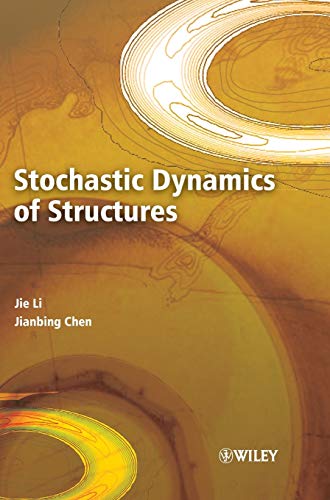In Stochastic Dynamics of Structures, Li and Chen present aunified view of the theory and techniques for stochastic dynamicsanalysis, prediction of...
Read more
reliability, and system control ofstructures within the innovative theoretical framework of physicalstochastic systems. The authors outline the fundamental concepts ofrandom variables, stochastic process and random field, andorthogonal expansion of random functions. Readers will gain insightinto core concepts such as stochastic process models for typicaldynamic excitations of structures, stochastic finite element, andrandom vibration analysis. Li and Chen also cover advanced topics,including the theory of and elaborate numerical methods forprobability density evolution analysis of stochastic dynamicalsystems, reliability-based design, and performance control ofstructures. Stochastic Dynamics of Structures presents techniques forresearchers and graduate students in a wide variety of engineeringfields: civil engineering, mechanical engineering, aerospace andaeronautics, marine and offshore engineering, ship engineering, andapplied mechanics. Practicing engineers will benefit from theconcise review of random vibration theory and the new methodsintroduced in the later chapters."The book is a valuable contribution to the continuingdevelopment of the field of stochastic structural dynamics,including the recent discoveries and developments by the authors ofthe probability density evolution method (PDEM) and itsapplications to the assessment of the dynamic reliability andcontrol of complex structures through the equivalent extreme-valuedistribution."—A. H-S. Ang, NAE, Hon. Mem. ASCE, Research Professor,University of California, Irvine, USA"The authors have made a concerted effort to present aresponsible and even holistic account of modern stochasticdynamics. Beyond the traditional concepts, they also discusstheoretical tools of recent currency such as the Karhunen-Loeveexpansion, evolutionary power spectra, etc. The theoreticaldevelopments are properly supplemented by examples from earthquake,wind, and ocean engineering. The book is integrated by alsocomprising several useful appendices, and an exhaustive list ofreferences; it will be an indispensable tool for students,researchers, and practitioners endeavoring in its thematicfield."—Pol Spanos, NAE, Ryon Chair in Engineering, RiceUniversity, Houston, USA
Hide more



